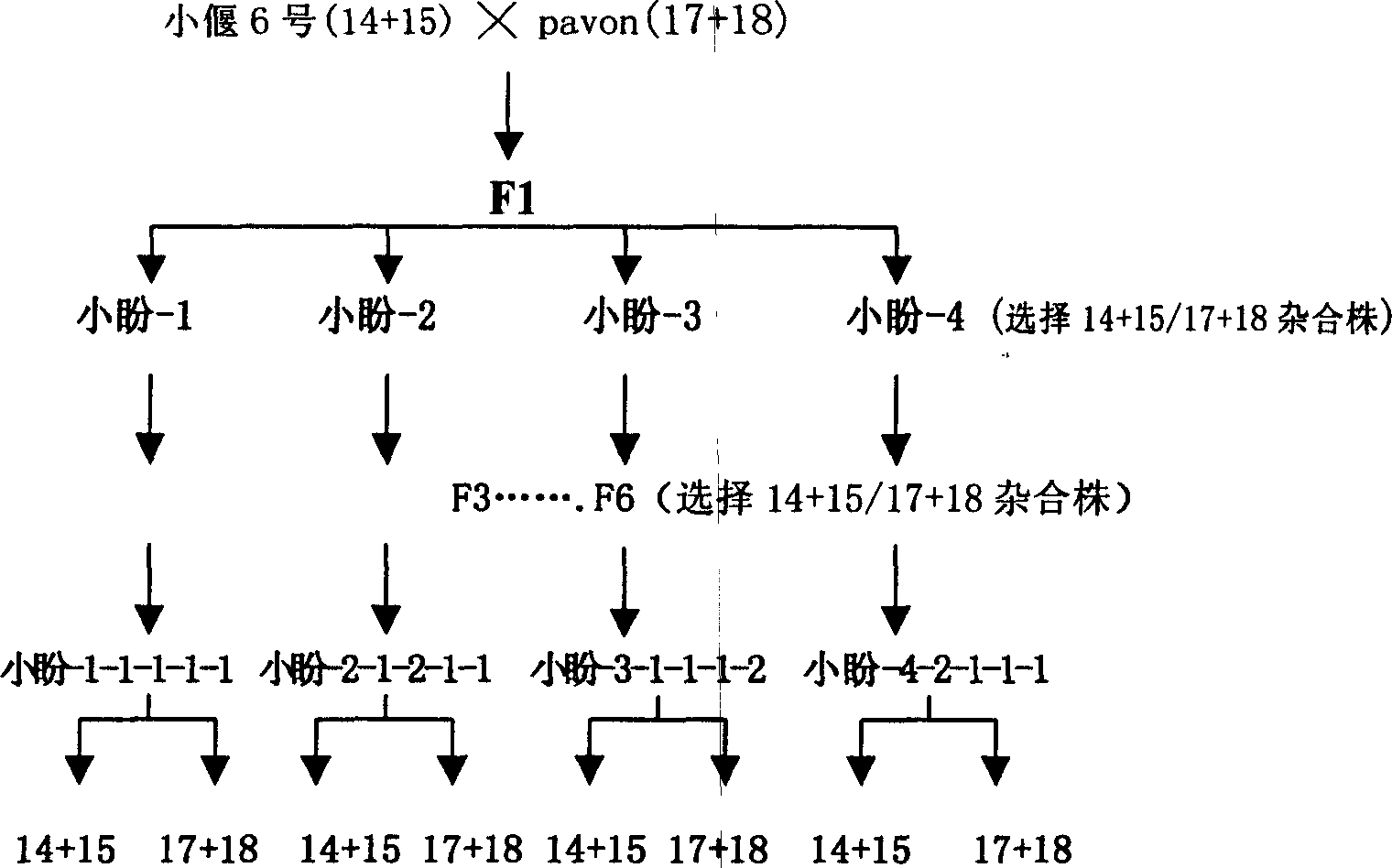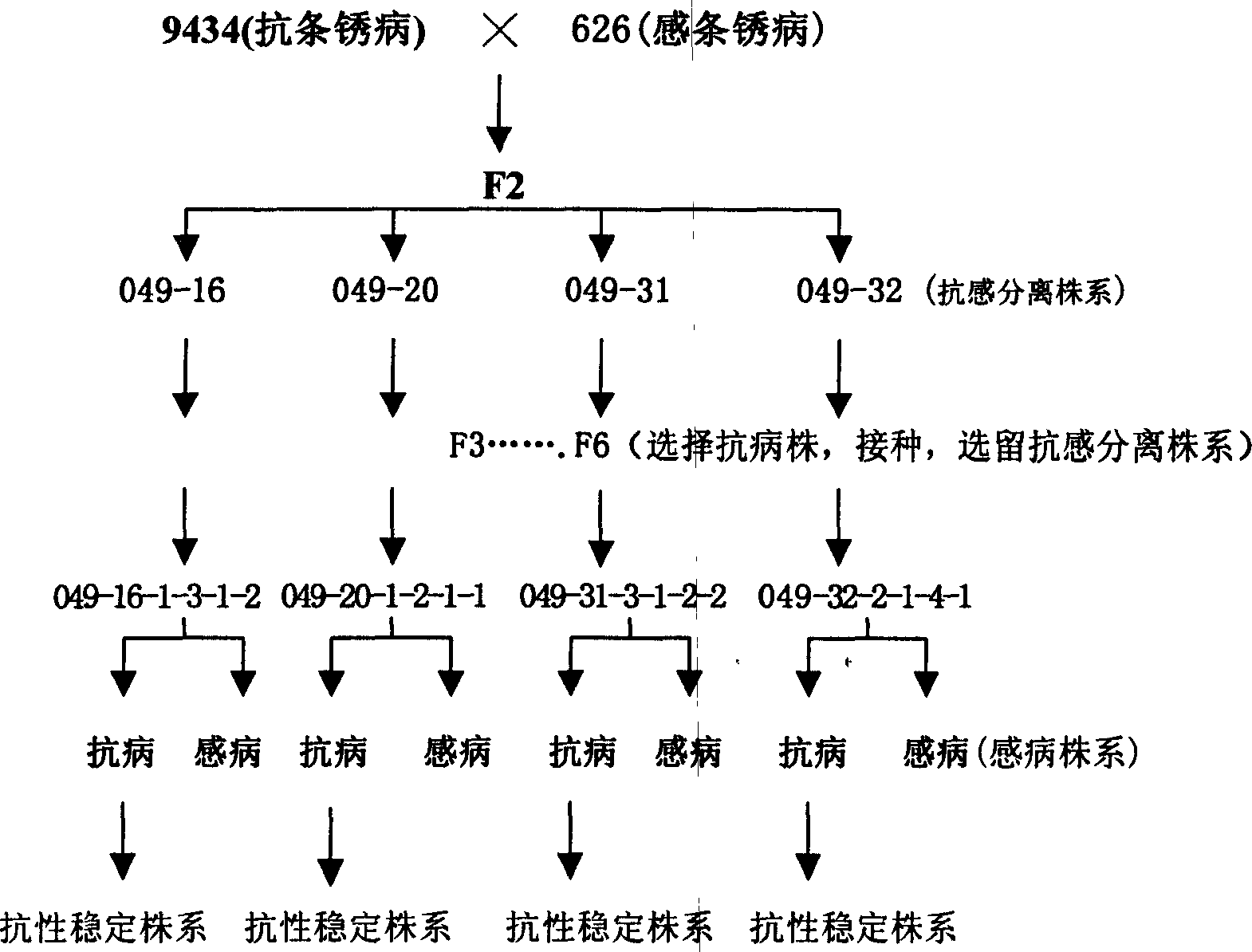Method for large scale cultivating common wheat near isogenic line
A near-isogenic system and a large number of technologies, applied in the fields of plant genetic improvement, botanical equipment and methods, and applications, can solve problems such as increased workload, difficulty in statistical analysis, and impact on the reliability of research results, saving manpower and Material strength, the effect of improving accuracy
- Summary
- Abstract
- Description
- Claims
- Application Information
AI Technical Summary
Problems solved by technology
Method used
Image
Examples
Embodiment 1
[0021] Such as figure 1 As shown, by crossing the parent Xiaoyan 6 (containing the gene encoding 14+15) and the parent Pavon (containing the gene encoding 17+18), using the law that self-pollinated crops tend to be homozygous from generation to generation, in In the process of gene homozygosity, biotechnology is used to track and detect the target subunit traits in each generation, that is, starting from the F2 generation, the pedigree selection is carried out the same as the conventional pedigree selection, and the target trait subunit heterozygous strains (both coding 14+ 15 is coded 17+18) and numbered (such as: Xiaopan-1, -2...-16), and pedigree selection and numbering will be carried out on these strains in the coming year (Xiaopan-1-1, -1-2, -2 ...-16-2), in turn, until the other agronomic traits of the strain are stable (about 7-8 generations), self-select two homozygous types, one encoding 14+15 subunit type, one encoding The 17+18 subunit type comes from two differen...
Embodiment 2
[0023] Breeding of near-isogenic lines with stripe rust resistance gene. Such as figure 2 As shown, the material 9434 containing the dominant disease-resistant gene was crossed with the ice-sensitive material 626 (9434×626), F2 was inoculated with stripe rust in the field, and a single disease-resistant plant (at least 4 plants) was selected, and F3 was planted. Select disease-resistant single plants from the strains separated by resistance, and plant the strains in the next year, eliminate stable or fully susceptible strains (one target gene is lost), and then randomly select among the strains isolated from resistance, and proceed sequentially By the 7th to 8th generation, the genetic background was stable and the target resistance was heterozygous. In the first generation of selfing, the disease-resistant and susceptible plants are selected to form a pair of near-isogenic lines, which form a near-isogenic group with the near-isogenic lines of other offspring types of resis...
PUM
 Login to View More
Login to View More Abstract
Description
Claims
Application Information
 Login to View More
Login to View More - R&D
- Intellectual Property
- Life Sciences
- Materials
- Tech Scout
- Unparalleled Data Quality
- Higher Quality Content
- 60% Fewer Hallucinations
Browse by: Latest US Patents, China's latest patents, Technical Efficacy Thesaurus, Application Domain, Technology Topic, Popular Technical Reports.
© 2025 PatSnap. All rights reserved.Legal|Privacy policy|Modern Slavery Act Transparency Statement|Sitemap|About US| Contact US: help@patsnap.com


